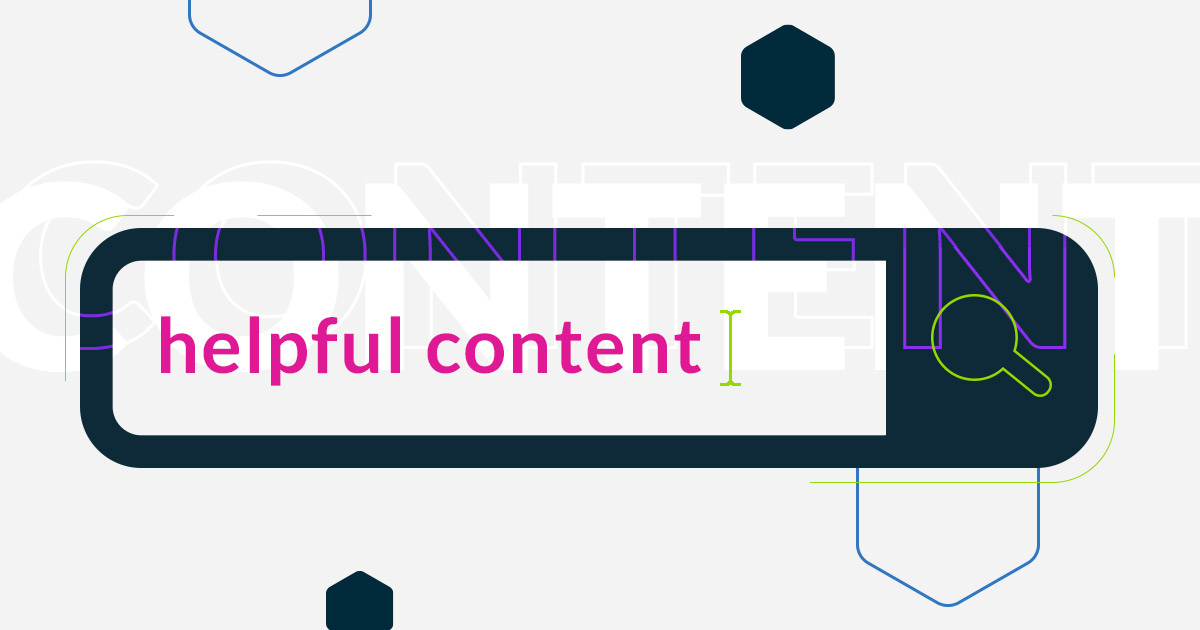From user experience optimization to new rules regarding AI-generated content, there’s a lot to unpack in this latest Helpful Content update.
Whether you run an online clothing store or a financial institution, ranking on Google is (or at least should be) at the top of your strategy list. But as we all attempt to familiarize ourselves with and master the ways to rank well with Google, the ways in which Google ranks are constantly in flux. We’re keeping you up to date with how Google ranks content by delineating their latest Helpful Content update.
Heads up: the changes are sweeping.
The Gist Of The Helpful Content System
While the system is always evolving and updating, Google’s Helpful Content System’s main purpose is to live up to its name; the system uses an evolving algorithm to rank genuinely helpful, well-written content higher and jumbled, poorly-written, generally unhelpful content lower. The goal of this approach is to more efficiently guide users to the answers they’re looking for, whether it’s a cake recipe or the life and death of Joan of Arc.
On the surface it may seem simple, but when it actually comes to ranking, the process becomes fairly complex — especially since the system is always being updated. Keep reading for a breakdown of the Google algorithm update 2023 has brought us and how your content strategy needs to evolve to please the ranking gods.
New Guidelines For AI-Generated Content
As we’re all aware, AI-generated content is quickly becoming ubiquitous. From classrooms, to social media imagery, to ecommerce websites, artificial intelligence has been creeping into every corner of our lives. In a recent blog post, we discussed the role of AI in content production/content marketing and made one clear declaration: “[AI] can be a significant benefit to content strategy with one important caveat: Humans still need to be involved.” Apparently, Google feels similarly to our Director of Content Strategy, Jen, as they have always had a guideline in the Helpful Content System that restricts machine-generated content. However, that guideline has been loosened with the latest Helpful Content update.
According to Search Engine Journal (SEJ), the original guidance reads as follows:
“Google Search’s helpful content system generates a signal used by our automated ranking systems to better ensure people see original, helpful content written by people, for people, in search results.”
The new guidelines state:
“Google Search’s helpful content system generates a signal used by our automated ranking systems to better ensure people see original, helpful content created for people in search results.”
Obviously, this wording is kind of a big change, but it certainly does not mean that Google is suddenly on board with AI-written blog posts and product descriptions. What this language really means is Google is acknowledging the increasing presence of AI tools in the creation of web content and attempting to moderate what kind of AI-generated (or partially generated) content ranks well. The key for Google will always come back to the name of this system: Helpful Content. As long as the content is verified, well-written, easily findable, and helpful, your AI-generated or AI-assisted content can rank well.
Be Cautious With Third-Party Content & Remain Focused On User Experience (UX)
Third-party content, such as advertisements, for example, has long been utilized to benefit both parties — the main site and the business/service being promoted. With the 2023 Google Helpful Content update, hosting third-party content can quickly become a detriment to your rankings. Here’s what Google had to say:
“If you host third-party content on your main site or in your subdomains, understand that such content may be included in site-wide signals we generate, such as the helpfulness of content. For this reason, if that content is largely independent of the main site’s purpose or produced without close supervision or the involvement of the primary site, we recommend that it should be blocked from being indexed by Google.”
Essentially, if your website is crawling with advertisements unrelated to the purposes of your main site/main content, your ranking could plummet. Be cautious when hosting third-party content moving forward and ensure its relevance to your site and content overall. Or, as mentioned above, you can block these ads from being indexed by Google.
This ties directly into the UX of your site. When pop-ups, auto-playing video ads, and intrusive interstitials are all over your site, it immediately denigrates the user experience, which automatically makes your web page/content less helpful to the visitor. When ranking websites, Google’s algorithm looks for websites that are easily navigable. They want visitors to be able to find what they’re looking for, plain and simple, without the frustration of being inundated by third-party content and/or unhelpful/misleading content. If your website is crowded, hard to navigate, and filled with generally useless or irrelevant content, your ranking will inevitably drop. User experience optimization has got to be your new best friend.
Self-Assessment Guidance
The self-assessment aspect of the Google Helpful Content update relates directly to the actual words on your website pages, and it’s not messing around. The language about this aspect of the update is clear:
- “Is this content written or reviewed by an expert or enthusiast who demonstrably knows the topic well?”
- “Are you changing the date of pages to make them seem fresh when the content has not substantially changed?”
- “Are you adding a lot of new content or removing a lot of older content primarily because you believe it will help your search rankings overall by somehow making your site seem “fresh?” (No, it won’t).”
In essence, you cannot fake it ‘til you make it with this Google algorithm update. Updates need to be genuine, information needs to be up to date and truthful, and, above all else, the content needs to be helpful. While this may seem obvious to most, it’s clear that Google is cracking down in this area for a good reason: false updates and poorly-researched content have been running rampant for far too long.
The Google Helpful Content Update — Final Points
This latest Helpful Content update is much more intricate than what we’ve discussed here today, but the above information includes some of the main things to be aware of. In short:
- Hold your AI-generated or AI-assisted content to very high standards; ensure that it is genuinely helpful, truthful, and people-first.
- Focus on the user experience; cut down on unrelated, intrusive, or unhelpful third-party content and keep the user experience at the forefront when creating/making changes to your site.
- Don’t try to fake your way through; to keep your ranking in a good place, you simply can’t cut corners. Take the time to scope your site for unhelpful content, make genuine updates to older pages and add well-written, well-researched, helpful content where possible, and keep it clean across the board when making attempts to improve your ranking.
If you’re looking for assistance in navigating this Google Helpful Content update, contact the Fishnet team!












